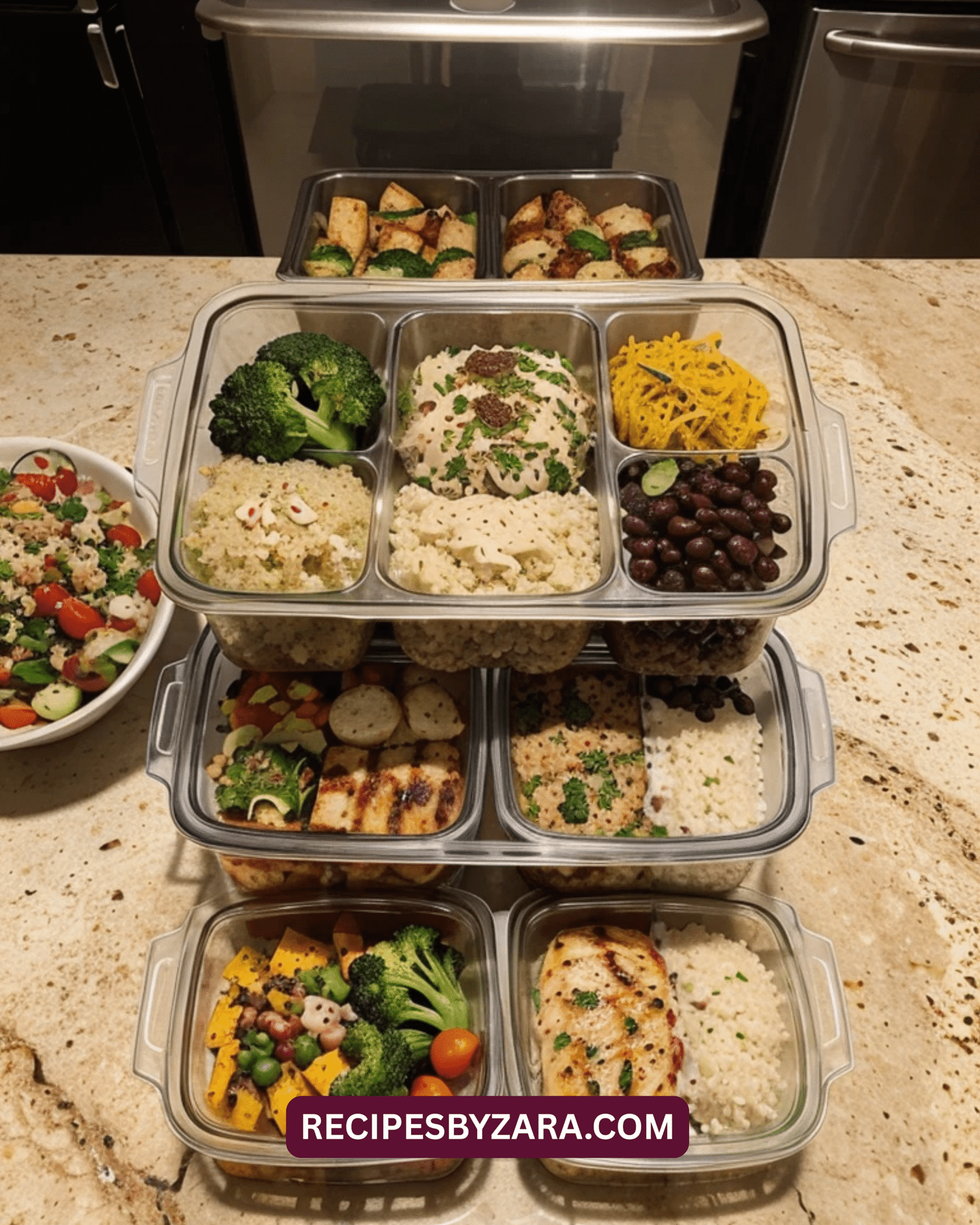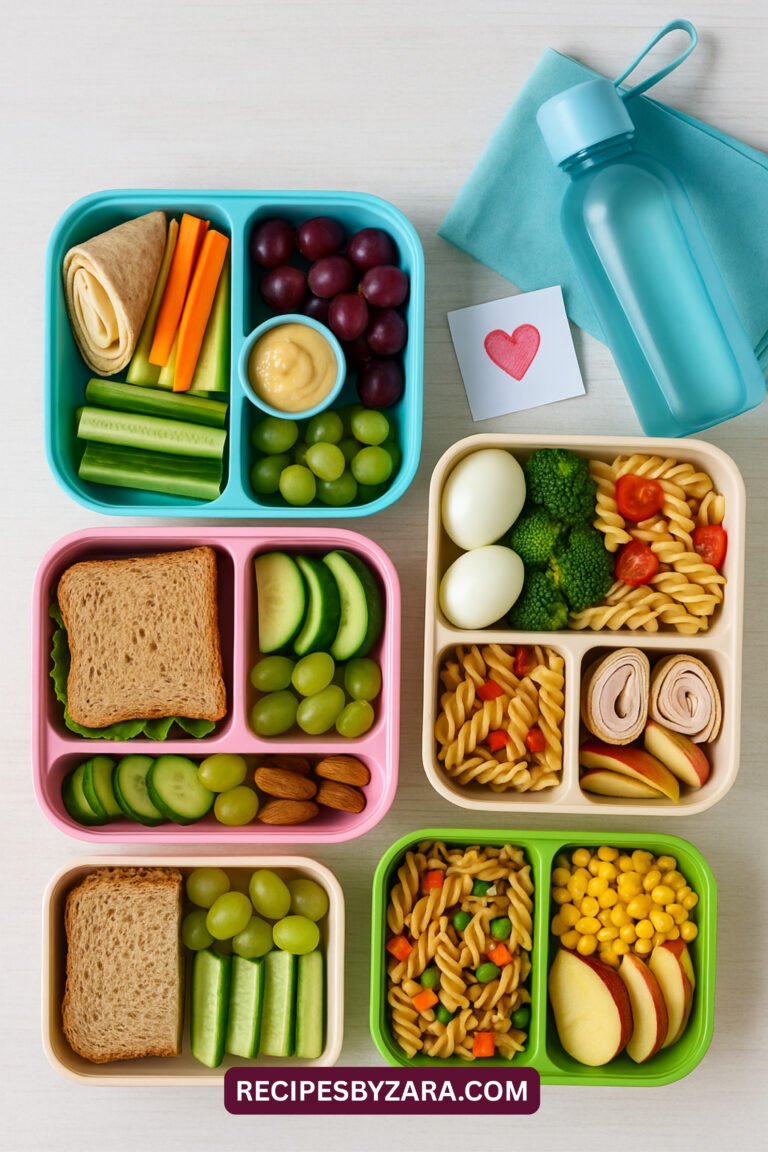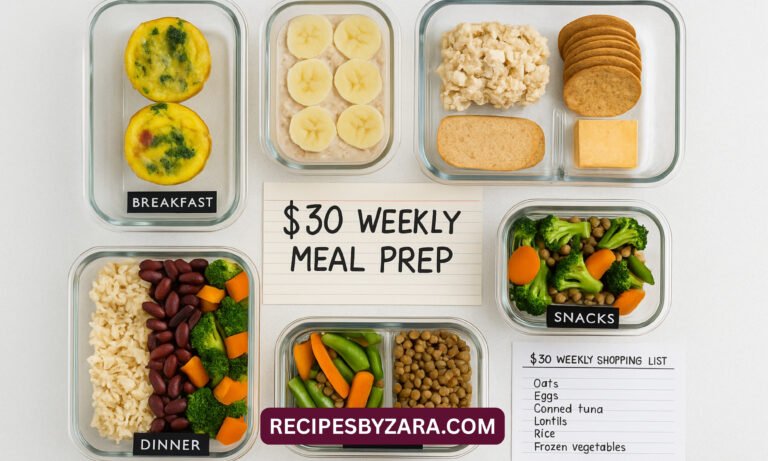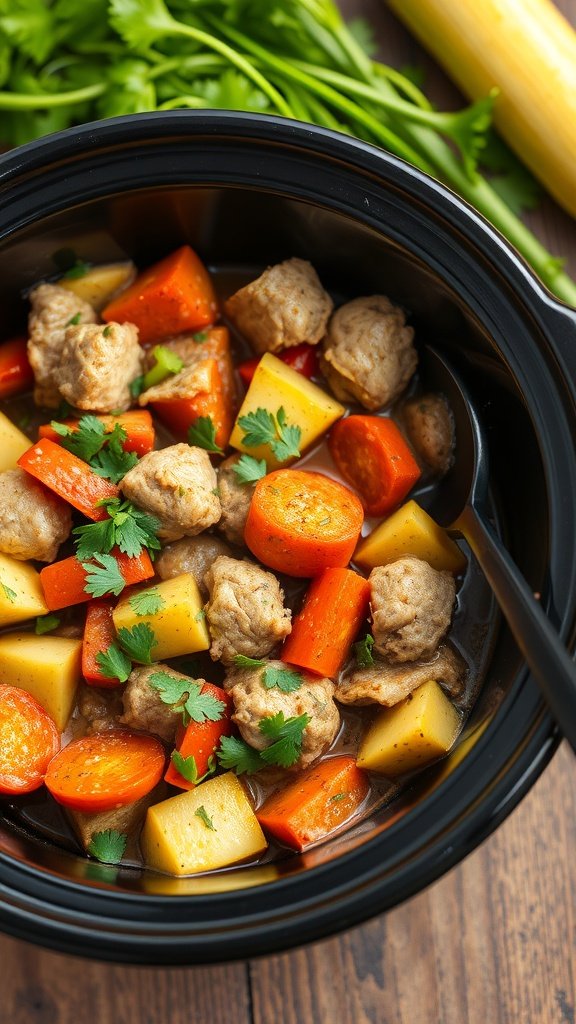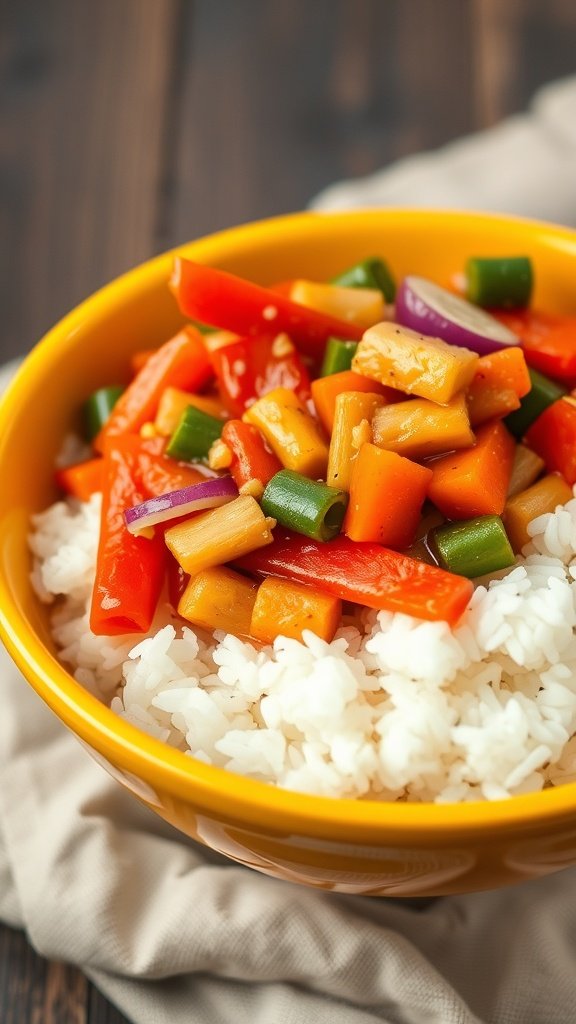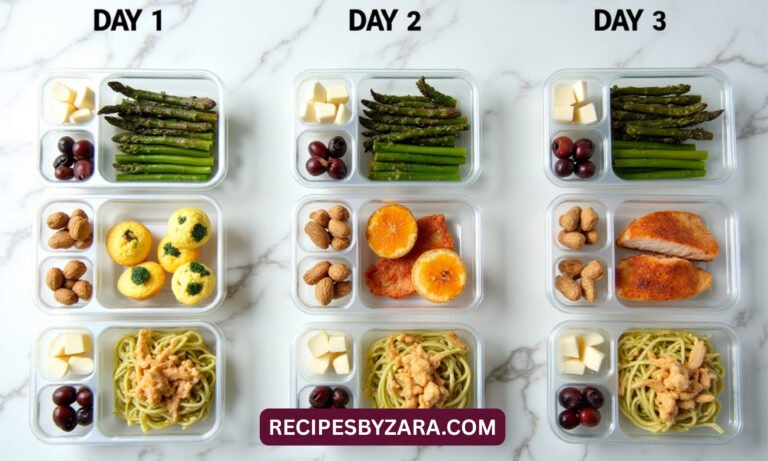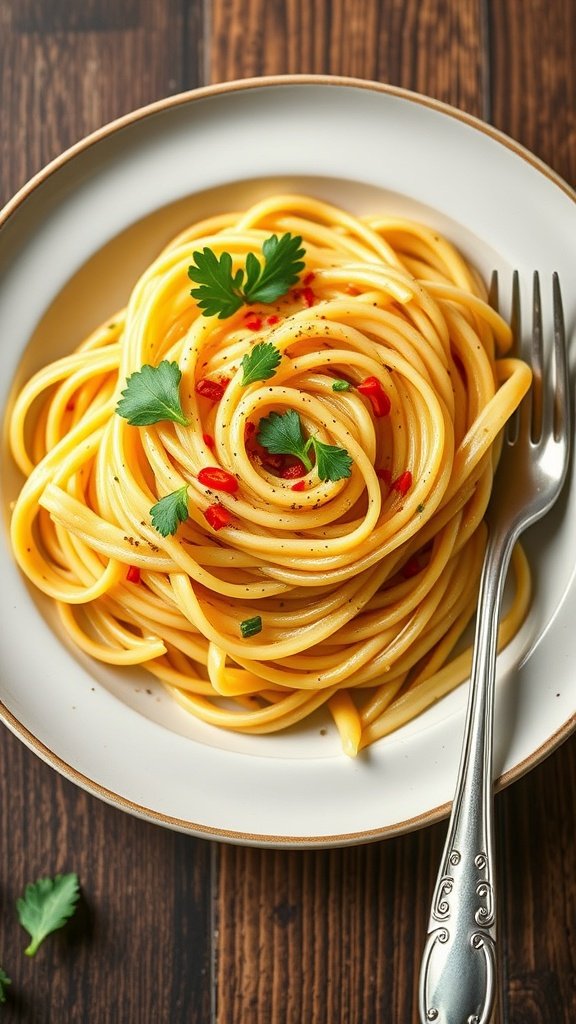Low Calorie Meal Prep Your Weekly Guide to Healthy & Hassle-Free Eating
Master your health goals with this simple and effective low calorie meal prep guide. Packed with budget-friendly recipes, grocery tips, and weight loss-friendly meals for the entire week.
The idea of eating fewer calories can be overwhelming but what if the solution was as simple as prepping your meals ahead of time? Low calorie meal prep offers an effective way to manage your health goals while saving time, money, and stress. With the right approach, it’s possible to enjoy delicious, filling meals without going overboard on calories.
One of the biggest reasons people struggle with weight loss or healthy eating is inconsistency. That’s where low calorie meal prep comes. It removes the guesswork, helps you stay within your calorie limit, and gives you complete control over your portions. Plus, it frees up your schedule during the week.
In this guide, we’ll walk you through everything you need to succeed from calculating your ideal calories to prepping meals for the week, complete with a grocery list and smart storage tips. Let’s take the stress out of eating clean and make your weekly meal planning a breeze.
1. What Is Low Calorie Meal Prep?
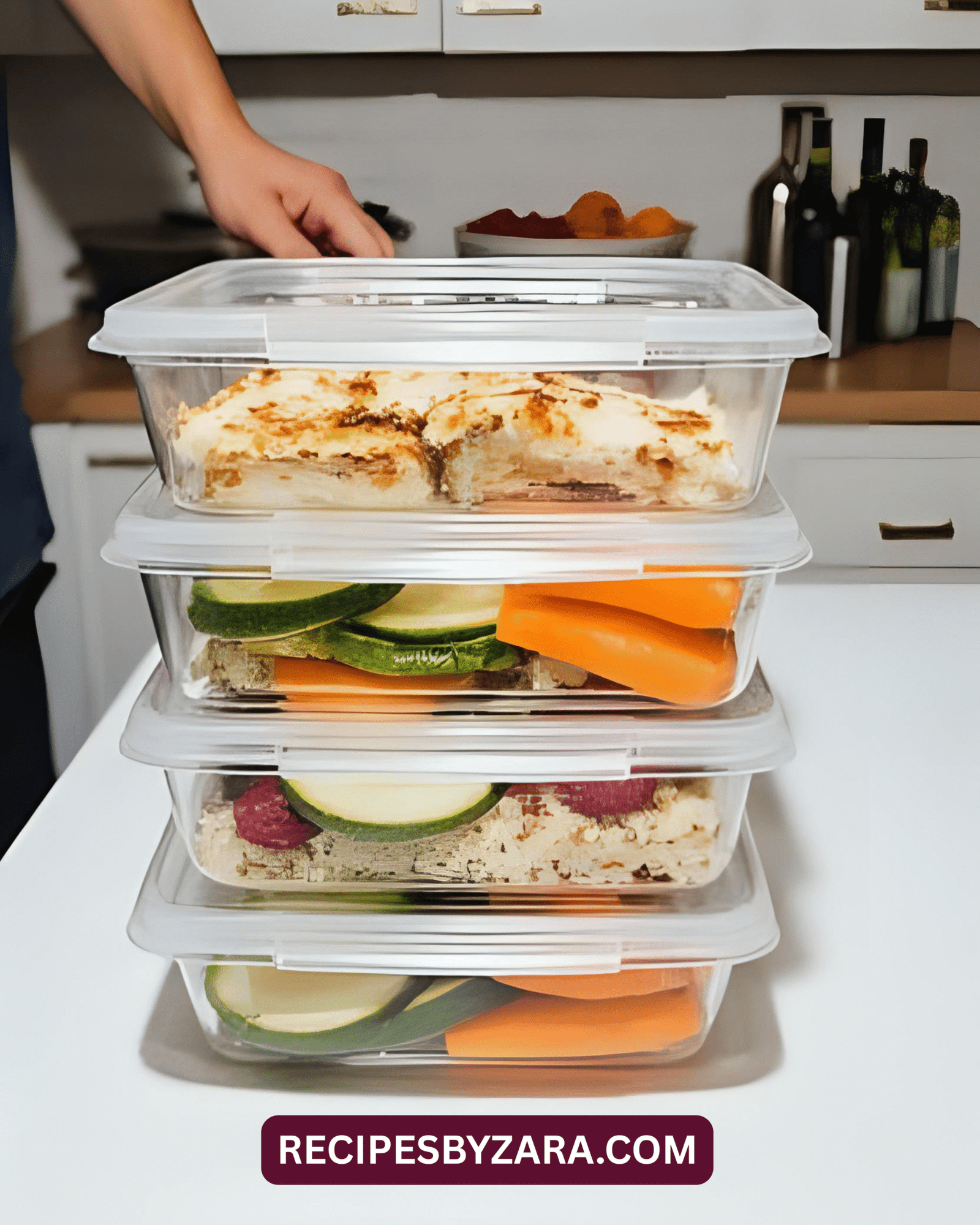
At its core, low calorie meal prep is the practice of preparing meals in advance that are lower in calories but still high in nutrients. While the term “low calorie” is flexible, most plans range between 1200 to 1800 calories per day, depending on age, gender, activity level, and specific goals like weight loss or maintenance.
What sets low calorie meal prep apart from regular meal prepping is its focus on portion control and calorie tracking. Instead of just making food ahead of time, you’re also planning around a calorie cap ensuring that each meal contributes to your daily target without leaving you hungry or lacking in nutrients.
It’s a strategic way to stay consistent. Rather than grabbing fast food when you’re tired, you’ll have a ready-to-eat low calorie lunch, or heat-and-serve low calorie dinner meal prep in the fridge. This reduces impulse eating, minimizes overeating, and promotes steady progress over time.
Whether your goal is to lose weight or just feel more energized, prepping low calorie meals helps you take charge of your nutrition in a structured and sustainable way.
2. Benefits of Low Calorie Meal Prep for Weight Loss & Energy

One of the primary benefits of low calorie meal prep is that it supports weight loss through a controlled calorie deficit. When you consume fewer calories than your body burns, you lose fat and prepping meals in advance makes this process almost automatic.
Planning meals keeps you from mindless snacking or overeating large portions. You’ll already know what and how much you’re eating throughout the day. Plus, a well-structured low calorie meal prep is packed with protein, fiber, and healthy fats keeping you full and satisfied longer.
It also boosts your energy. Contrary to the myth that fewer calories equal less energy, eating the right amount of calorie deficit recipes filled with real, whole foods can actually make you feel more alert and focused. Oats breakfast prep, chicken meal prep, and cauliflower rice bowls are light yet energizing meals perfect for any time of the day.
Meal prepping also reduces decision fatigue. You won’t have to spend mental energy deciding what to eat when your week is already laid out. The more consistently you prep, the more it becomes a lifestyle, not just a short-term fix.
3. How to Calculate Your Caloric Needs First
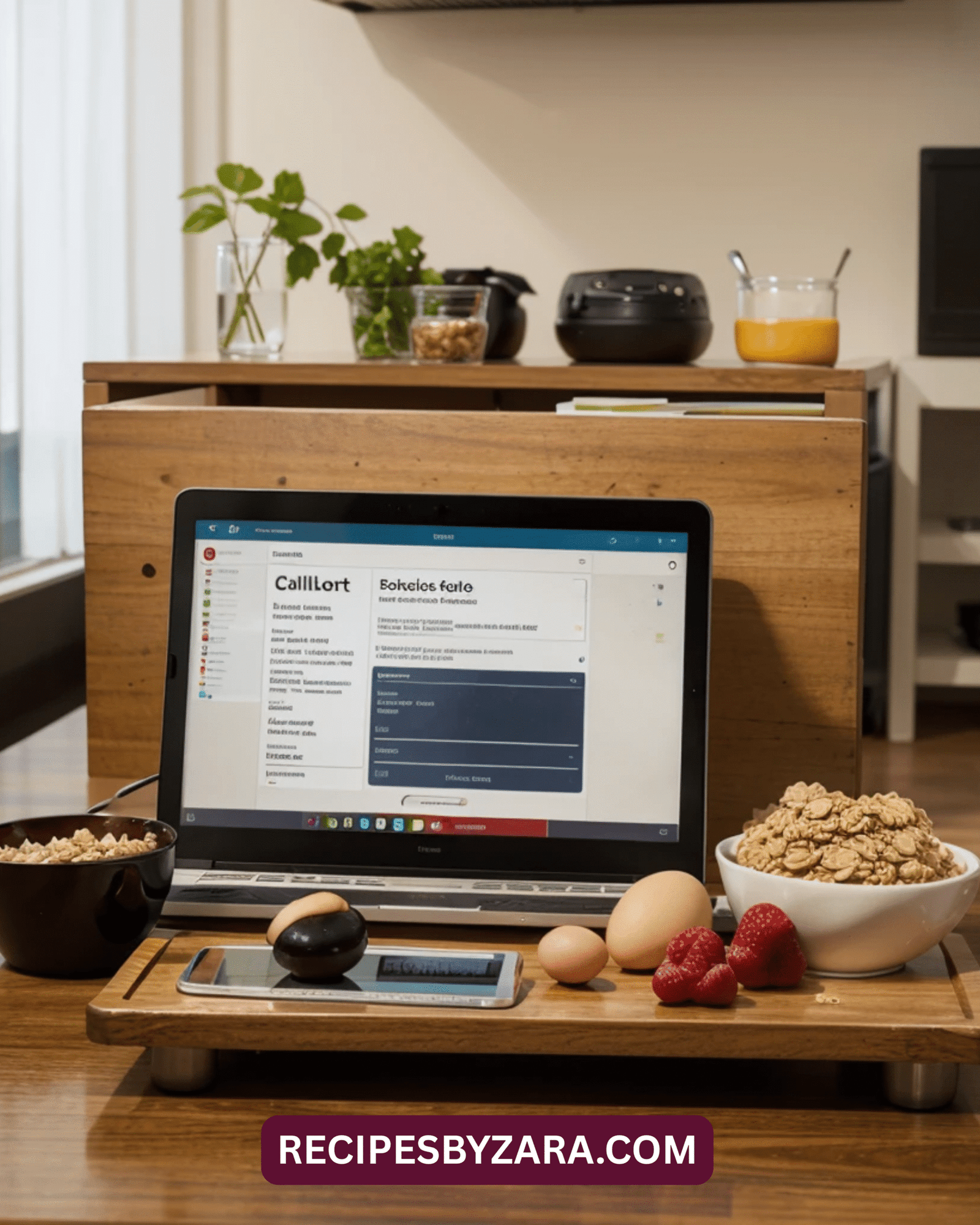
Before diving into low calorie meal prep, it’s crucial to understand how many calories you actually need. This is where terms like BMR (Basal Metabolic Rate) and TDEE (Total Daily Energy Expenditure) come into play.
Your BMR is the number of calories your body burns at rest, while your TDEE includes all activities walking, working out, and even digesting food. You can use online tools or a calorie tracker app like MyFitnessPal to estimate your daily needs. Once you have your number, create a calorie deficit by subtracting 300–500 calories per day for steady weight loss.
For example, if your TDEE is 2000 calories, aim for 1500–1700 calories daily. That’s where 1200 calorie meal plan ideas come in handy especially for those aiming for more aggressive fat loss (under professional supervision).
Once you know your number, structure your meals around it. Plan for low calorie breakfast, low calorie lunch ideas, and balanced low calorie dinner meal prep meals that fit your limit without leaving you hungry.
4. Budget-Friendly Low Calorie Ingredients to Stock Up On
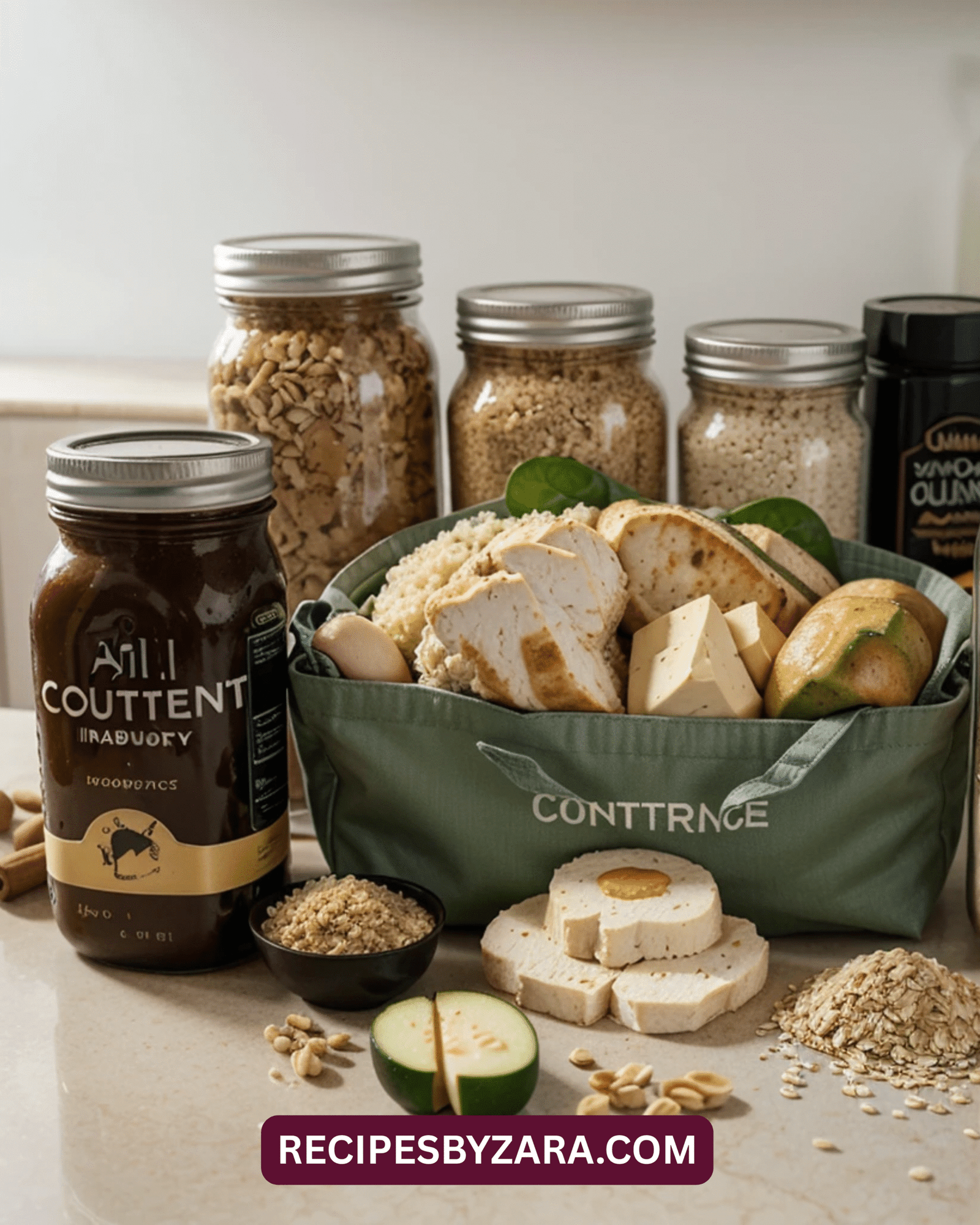
When starting a low calorie meal prep routine, having the right ingredients on hand can make all the difference. Fortunately, you don’t need expensive or exotic items to eat clean and healthy. Focus on whole, unprocessed foods that are filling and low in calories. These include vegetables, lean proteins, whole grains, and fiber-rich fruits.
Lean proteins are essential for muscle repair and satiety. Items like chicken breast, canned tuna, eggs, and tofu for weight loss are affordable and can be used in a variety of recipes. These proteins are also low in fat and calories, making them ideal for any low calorie diet plan.
When it comes to carbs, not all are bad especially when you’re choosing smart options. Stock up on brown rice, quinoa, sweet potatoes, and oats. These foods are rich in fiber and nutrients and provide long-lasting energy without causing calorie spikes.
Vegetables and fruits should make up the bulk of your meals. Choose high-volume, low-calorie produce like cauliflower, zucchini, spinach, berries, and cucumbers. Add in healthy fats like olive oil or a few plain nuts for balance, but in moderation to stay within your calorie range.
5. 7-Day Low Calorie Meal Prep Plan (with Recipes)
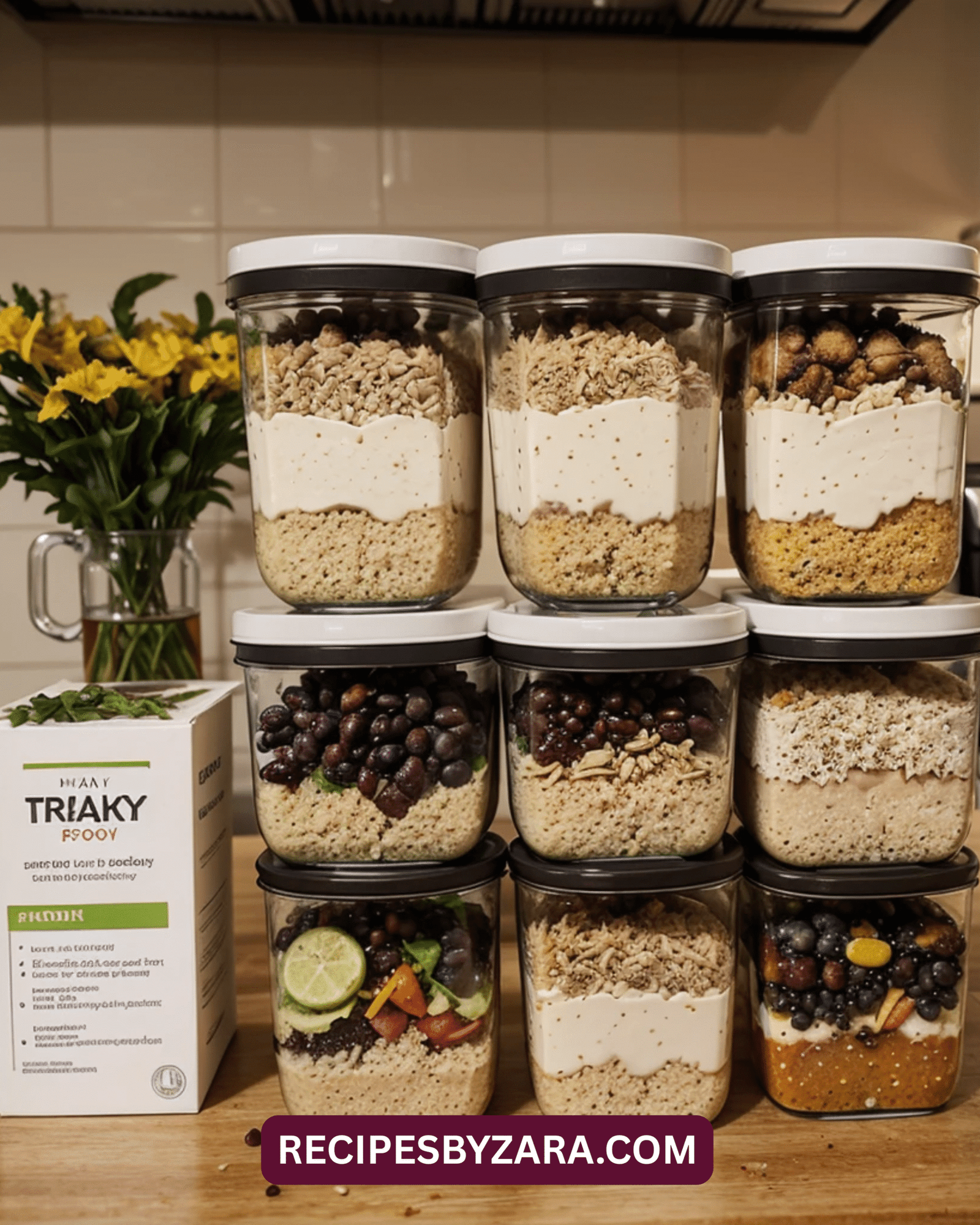
Planning your meals ahead of time makes sticking to your calorie goals much easier. A 7-day low calorie meal prep plan allows you to prepare all your meals in advance, so you’re never caught off guard or tempted by unhealthy options. Each day should include a simple low calorie breakfast, a filling lunch, a clean dinner, and a light snack.
Start your mornings with oats breakfast prep, egg muffins, or Greek yogurt with berries. These meals are under 300–400 calories and keep you full until lunch. For variety, switch up the fruit or add cinnamon and peanut butter for flavor.
Lunchtime is a great opportunity to use your chicken meal prep or tofu stir-fry meals. Pair your protein with cauliflower rice bowls, quinoa, or roasted vegetables. Most of these combinations are under 500 calories and very satisfying.
Dinners can be light yet delicious such as baked chicken with zucchini, sweet potato bowls, or a tuna salad with olive oil dressing. Snacks like apple slices with peanut butter, low calorie smoothies, or nuts in portioned containers can help manage hunger between meals.
6. Grocery List for One Week of Low Calorie Eating

Creating a clear grocery list helps you stay focused and avoid overspending. A well-planned list ensures that you have everything you need for a full week of low calorie meal prep. Break your list into categories: proteins, carbs, vegetables, fruits, and pantry staples. This organization also helps speed up your shopping trip.
For proteins, add items like chicken breasts, tofu, eggs, and canned tuna. These are versatile and can be used across multiple meals. They’re also low in calories and provide the foundation for a satisfying diet.
When choosing carbs, focus on nutrient-dense options. Add oats, quinoa, and sweet potatoes to your list. These complex carbs release energy slowly, keeping you full longer and reducing cravings. They are also easy to cook in bulk.
Don’t forget your product. Buy spinach, cauliflower, zucchini, berries, apples, and bananas. For pantry essentials, grab olive oil, salt, pepper, and peanut butter in a small jar. With this simple grocery list, your entire week of low calorie meals will be covered without stress.
7. Smart Meal Prep Tips to Stay on Track

Consistency is the key to making your low calorie meal prep routine successful. The best way to stay on track is to develop a simple, repeatable system that fits your lifestyle. You don’t need to spend hours in the kitchen every day with the right tips, you can prep for the week in just a couple of hours.
Start with batch cooking meals. Cook a big portion of chicken, roast a tray of vegetables like cauliflower and zucchini, and prepare quinoa or brown rice in bulk. Store everything in separate containers so you can mix and match meals throughout the week.
Use proper tools like meal prep containers and a digital food scale. Portioning your food ahead of time keeps your calories in check and avoids overeating. Containers with divided sections are especially helpful for organizing proteins, carbs, and vegetables in balanced amounts.
Label each container by day or meal type and store them in the fridge or freezer. This makes your week smoother and keeps you from falling off track. Having ready-to-go meals eliminates the temptation of ordering takeout and helps you stay committed to your low calorie diet plan.
8. Common Mistakes to Avoid with Low Calorie Meal Prep

Even with a great plan, some mistakes can slow down your progress. One common issue is undereating, especially when people cut calories too low. This can lead to fatigue, cravings, and muscle loss. Make sure your meals are still balanced and satisfying, even if they’re low in calories.
Another mistake is eating too many high-calorie “healthy” foods. While items like nuts, avocado, and olive oil are good for you, it’s easy to go overboard. Stick to small portions and use a calorie tracker app to keep everything in check.
Repeating the same meals every day can also cause boredom. While chicken meal prep or tofu stir-fry are great, try switching up your sauces, spices, or vegetables to keep things exciting. Variety will help you stick to your low calorie meal prep plan long-term.
Lastly, skipping snack prep is a missed opportunity. When hunger hits, you’re more likely to grab something unhealthy if you don’t have snacks ready. Portion out Greek yogurt, fruit, or low calorie smoothies ahead of time so you always have something smart within reach.
Conclusion
Eating fewer calories doesn’t have to mean restriction or boredom. With smart planning, low calorie meal prep becomes a lifestyle tool that supports long-term health, weight loss, and energy.
Start with the basics: choose budget-friendly low calorie meals, prep in bulk, and track your intake. You don’t need perfection; you just need a plan that works for your schedule and your goals. As long as you stay consistent and flexible, the results will follow.
This week, try the 7-day low calorie meal prep plan and see how much time, money, and energy you save. Your body will thank you and your kitchen habits will change for good.
FAQs
1. How many calories should I eat if I want to lose weight?
That depends on your current weight, activity level, and goals. Most people aim for 1200–1800 calories per day to lose weight safely. Use a calorie tracker app to find your specific number.
2. What is the best low calorie meal for lunch?
Great options include chicken meal prep bowls with quinoa and veggies, or tofu stir-fry with cauliflower rice. These meals are filling, balanced, and usually under 500 calories.
3. How long can low calorie meal prep meals last in the fridge?
Most low calorie meal prep meals last 4–5 days when stored properly. Freeze anything you won’t eat by Day 4 to keep it fresh and safe.
4. Are low calorie meals good for energy and workouts?
Absolutely when they’re made with nutrient-dense ingredients like lean protein, complex carbs, and healthy fats, they provide stable energy for workouts and daily tasks.
5. Can I meal prep low calorie meals for a family?
Yes! Just scale the recipes up and portion accordingly. Use family-friendly proteins like chicken, affordable veggies, and oats breakfast prep options for kids and adults alike.
6. Is low calorie the same as low carb?
No. Low calorie focuses on total energy intake, while low carb limits carbohydrates specifically. You can eat low calorie meals that are high or low in carbs depending on your needs.
7. Do I need to count calories in every meal?
It helps when starting out. Over time, you’ll learn portion sizes by feel. For accurate tracking, especially during calorie deficit goals, logging meals is useful.
8. What containers are best for meal prep?
Choose meal prep containers that are microwave-safe, leak-proof, and BPA-free. Glass containers are ideal for taste and longevity, while plastic ones are great for lightweight storage.
